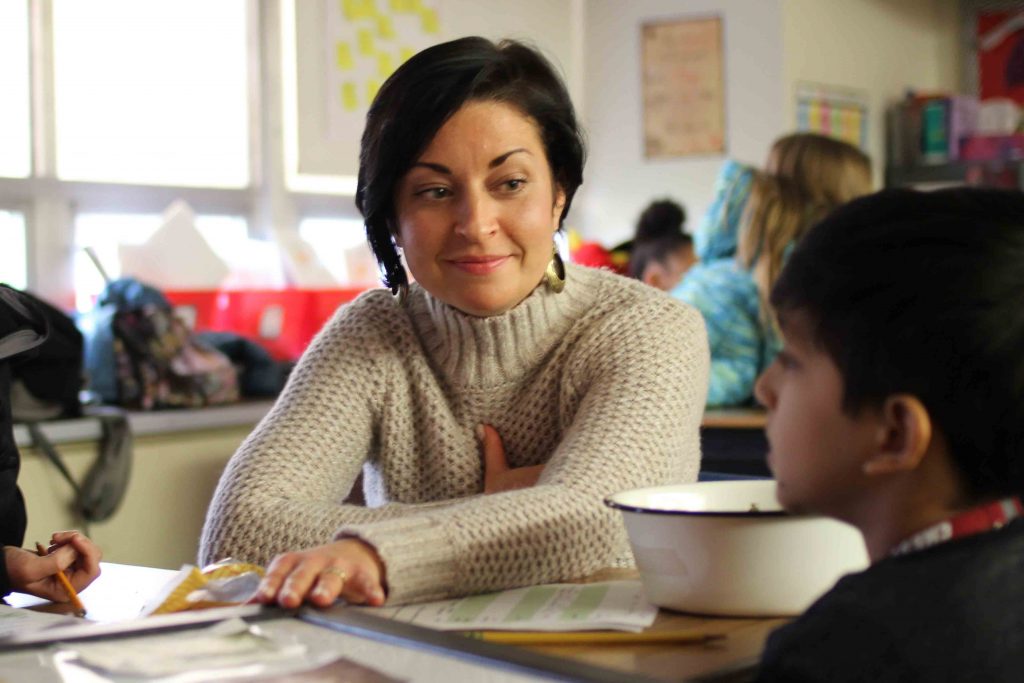In her quest to care for the planet, newly tenured Prof. Rothenberger isn’t afraid to get her hands dirty
By Katie Neitz
Growing up, Megan Rothenberger ’02 never thought creepy-crawlies were creepy at all.
She spent every minute she could outdoors, playing in the stream near her rural Pennsylvania home, where she amassed quite the creature collection.
“I had the most amazing collection of bugs,” she says. “I had thousands. I remember transporting them in two big rolling carts to school for an eighth-grade science project. I was the kid who would bring in buckets of bugs into my mom’s kitchen.”
Rothenberger didn’t realize she was a budding conservationist. Not yet. When she enrolled in Lafayette as a first-generation college student in 1998, she zeroed in on pre-med. “I was good at biology in high school,” she says. “It was just the thought process then that if you were going to major in biology, it would be to become a medical doctor.”
A year in, she realized her interests weren’t aligned with her ambitions. She didn’t enjoy studying anatomy and human physiology. She did, however, love her botany, environmental science, and marine biology courses.
And so, Rothenberger made a course correction and nurtured her inner nature girl. Today, she shares her passion for conservation biology with students at her alma mater.

As associate professor of biology at Lafayette, Rothenberger studies how human activities impact ecosystems and economies of aquatic ecosystems, which was the focus of her Ph.D. dissertation at North Carolina State University.
Since joining Lafayette as a faculty member in 2009, she and her “lab family” of student collaborators have been monitoring the water quality of several areas, including the Hudson-Raritan Estuary in New York and Bushkill Creek, near campus in Easton, Pa.
In New York, they are specifically looking at excessive algal growth, which is an environmental concern.
“Nutrients like nitrogen and phosphorus can become so excessive in aquatic ecosystems that they become a contaminant,” Rothenberger says. “They will stimulate algal growth to an extent that when the algae is decomposing, it sucks the oxygen out of the water, which can cause fish kills. These nutrients can also stimulate certain kinds of algae, many of which have toxins.”
Back home at the Bushkill Creek, Rothenberger collaborates with students as well as Dave Brandes, and Professor Dru Germanoski of the Environmental Science and Environmental Studies programs to monitor water quality and larval forms of insects, which indicate a stream’s health. Several Bushkill dams are slated for removal, and there’s value to getting samples prior to that.
“It’s rare for water quality, biota, and sediments to be monitored for multiple years before a dam is removed,” she says. “Usually, it only occurs right before and after a dam is removed, and then there isn’t much of a data set to compare it to. So we thought, let’s get on that. There are very few studies that are this collaborative and have so many years of data. I’m very excited to be part of that.”
Additionally, Rothenberger and her students monitor vernal pools—important amphibian habitats—at Jacobsburg State Park in Nazareth, Pa. They also have investigated the impact of road proximity, canopy cover, and soil acidity on the wood frog and woodland salamander in the park.
Much of the data Rothenberger collects is then shared with park managers, community members, local conservation organizations, and policymakers so that restoration and management decisions can be made to protect a species or habitat. Which is what separates conservation from other environmental fields, like ecology, she says.
“Conservation is an applied discipline—you take what you learn out of the field and the lab and you apply it,” she says. “One of our goals is to use our knowledge to come up with practical plans for restoring and conserving ecosystems.”
Being able to enlighten others and spark positive change in the world isn’t only what attracted Rothenberger to conservation. It’s also what attracted her to teaching.
“When I left Lafayette, I thought I wanted to be a scientist like Jane Goodall or Rachel Carson,” she says. “And then as a graduate student, I had a teaching assistantship and a research assistantship. I liked the research work, but I realized I liked the teaching even more. I love sharing my experience and seeing the light bulb go on for students, especially students who recognize a problem and want to do something about it.”
And doing that at Lafayette makes it all the more meaningful.
“I loved it here as a student,” she says. “From the first time I was on the campus, I just had a feeling. I felt good here. Some people have asked me if it was strange to come back to teach, and my answer was, no not at all. It felt like I was coming home.”

1 Comment
Congratulations, Professor Rothenberger.
May you continue the tradition of excellence that I first experienced in a Lafayette classroom taught by Mary Jane Bradford, associate professor emerita of biology. Professor Bradford was my favorite teacher of all time. I had the pleasure of attending her ‘Ecology’ class in 1973.
Comments are closed.